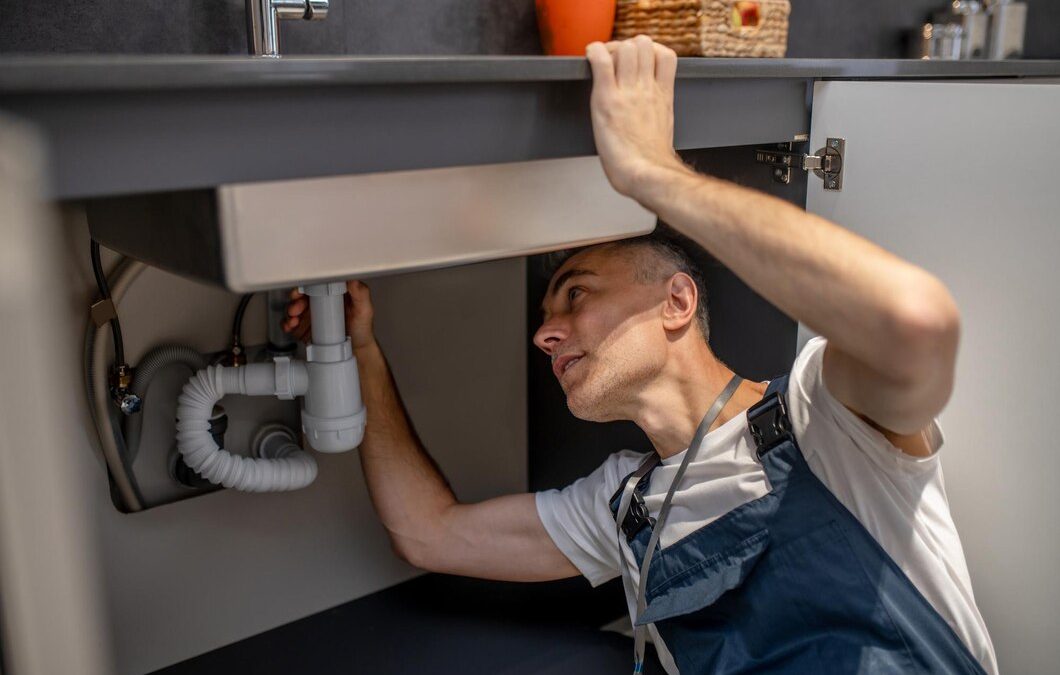Keeping a commercial building in good shape involves a lot of regular maintenance, and one of the most essential aspects is ensuring a reliable plumbing system. Proper plumbing prevents not only expensive repairs but also ensures smooth daily operations. If you manage a commercial property, you know how even minor plumbing problems can disrupt your business and inconvenience tenants or employees.
In this article, we’ll explore some practical ways to prevent common plumbing problems in commercial buildings. Regular maintenance checks help catch issues before they become big headaches. Managing water pressure effectively is also crucial to avoid damage to pipes and fixtures. Spotting leaks early can save significant money and resources. Lastly, we’ll discuss best practices for keeping drains clean and preventing clogs, especially in high-traffic areas.
By following these steps, you can maintain a trouble-free plumbing system, ensuring your business runs smoothly and efficiently. Properly managing your plumbing infrastructure is a key part of protecting your investment and providing a safe environment for everyone who uses your building.
Regular Maintenance Checks to Avoid Major Issues
Regular maintenance checks can help you avoid major plumbing issues in your commercial building. These checks ensure that all the plumbing systems are working correctly and can prevent costly emergencies down the line. Schedule checks at least twice a year to catch small problems before they escalate. During these checks, look for signs of wear and tear, such as rust or leaks, which can indicate potential issues.
Another crucial aspect of maintenance is inspecting water pressure levels regularly. You can use a water pressure gauge to measure the pressure in your building. Ideal water pressure for commercial buildings usually falls between 40 and 60 psi (pounds per square inch). If your readings are consistently above or below this range, it may be time to investigate further. Regular maintenance will help maintain optimal water pressure and prevent unexpected disruptions.
Tips for Properly Managing Water Pressure in Commercial Buildings
Managing water pressure in commercial buildings requires a few strategic steps. First, ensure you have a pressure-reducing valve installed. This device automatically adjusts the water pressure to an optimal level, preventing it from getting too high. A pressure-reducing valve is essential in buildings with varying water demands.
Next, keep an eye on your water usage. Excessive usage can impact water pressure, especially during peak hours. Installing water-saving fixtures can help manage flow rates and maintain steady pressure. Regularly monitoring water usage can also identify unusual spikes, which may indicate leaks or other issues.
Finally, developing a maintenance schedule can go a long way. Ensure that professionals inspect your plumbing system regularly. They can check for blockages, malfunctioning fixtures, and other factors that might affect water pressure. Properly managing water pressure ensures smooth operation and minimizes disruptions to daily activities in your building.
Identifying and Fixing Common Pipe Leaks Early
Identifying pipe leaks early can save both time and money for your commercial building. One of the first signs of a leak is an unexplained increase in your water bill. If you notice a sudden spike, you should inspect your building for leaks. Common spots to check include near fixtures, under sinks, and along visible pipes. Look for signs of water stains, dampness, or mold growth, which can indicate a hidden leak.
Once you identify a leak, it’s crucial to fix it right away. Small leaks can often be repaired by tightening connections or replacing worn-out seals. For more significant leaks, you may need to replace sections of the pipe. In either case, addressing leaks promptly prevents water damage and maintains optimal water pressure. Keeping an eye on your plumbing system and making quick repairs will help avoid larger, more costly issues down the line.
Best Practices for Drain Cleaning and Preventing Clogs in High-Traffic Areas
High-traffic areas, such as restrooms and kitchens in commercial buildings, are prone to clogs. Implementing best practices for drain cleaning can help prevent these issues. First, encourage regular cleaning of all drains. Simple measures like using strainers to catch debris and routinely pouring hot water down the drains can prevent buildup.
In addition, professional drain cleaning services should be scheduled periodically. Professionals can use specialized tools to clear out any blockages and ensure that pipes are flowing smoothly. Consider investing in enzymatic drain cleaners, which use natural bacteria to break down organic material without harming your pipes.
Be proactive by educating staff on what should and shouldn’t go down the drain. Items like grease, coffee grounds, and paper towels can cause major clogs if disposed of improperly. By following these best practices, you can keep your drains clear and your plumbing system functioning efficiently.
Conclusion
Water pressure issues in commercial buildings are not just an inconvenience; they can lead to significant disruptions and costs if not addressed promptly. By understanding the common causes, maintaining regular checks, managing water pressure, and quickly addressing leaks and clogs, you can keep your building running smoothly. These proactive steps will help you avoid emergencies and maintain a comfortable environment for all occupants.
At Plumb Krazy Plumbing, we specialize in providing reliable commercial plumbing solutions. Our expert services ensure your plumbing system operates at its best year-round. If you’re experiencing water pressure problems or need maintenance services, contact us today. We’re here to help you keep your commercial building in top shape.

